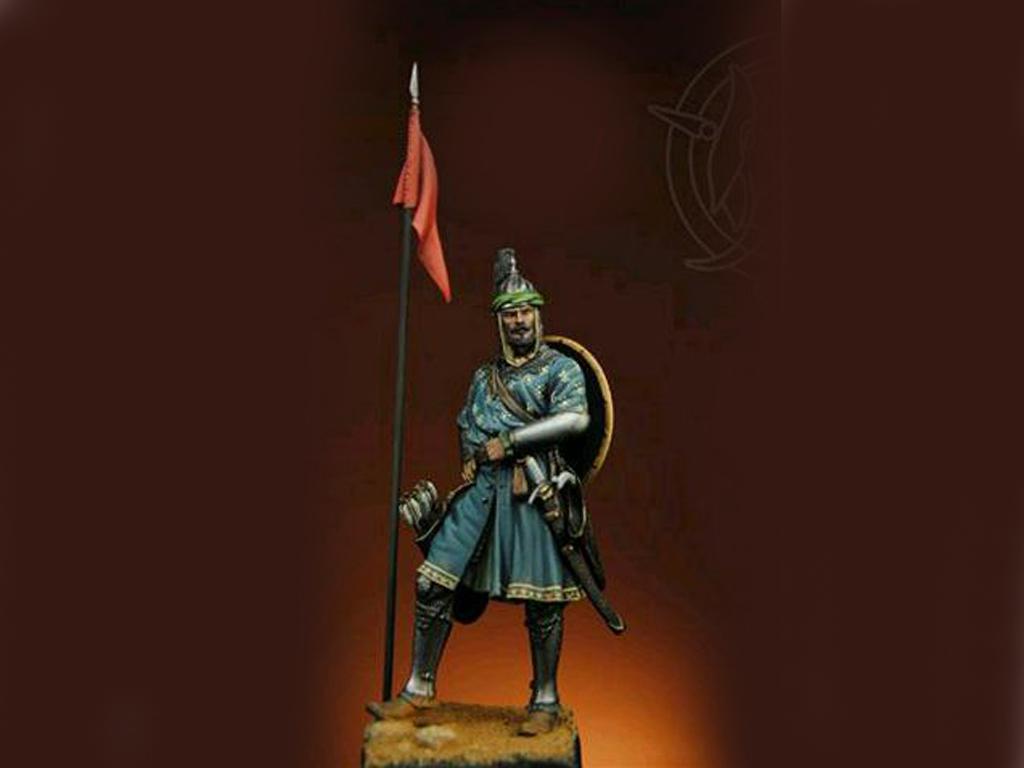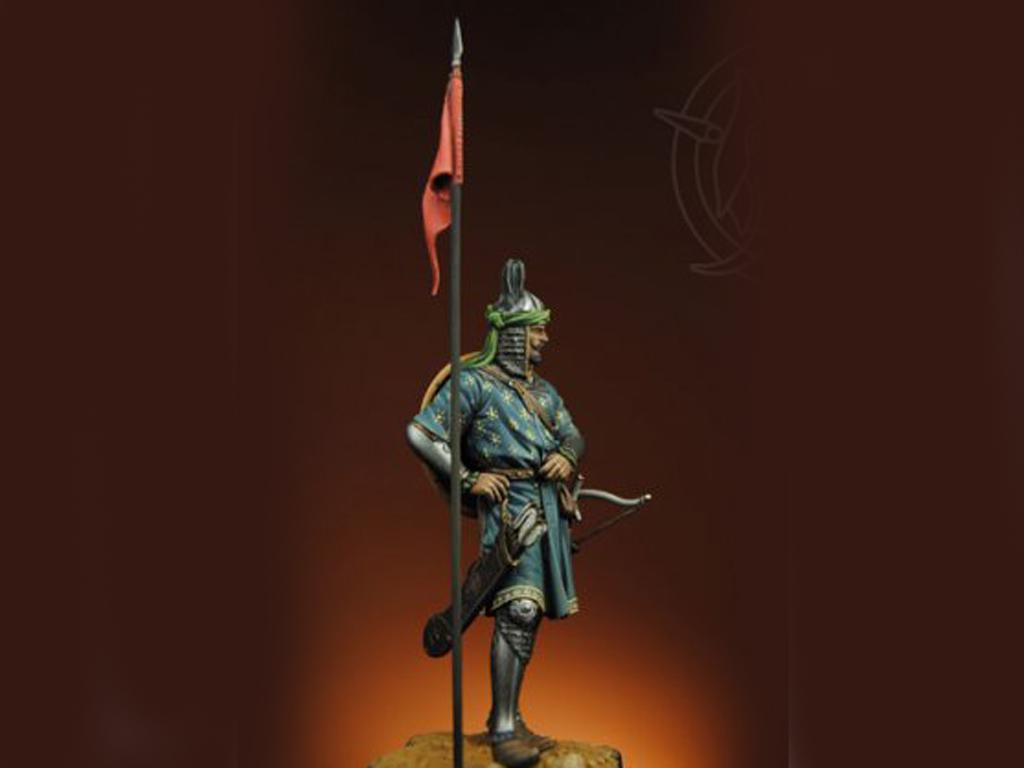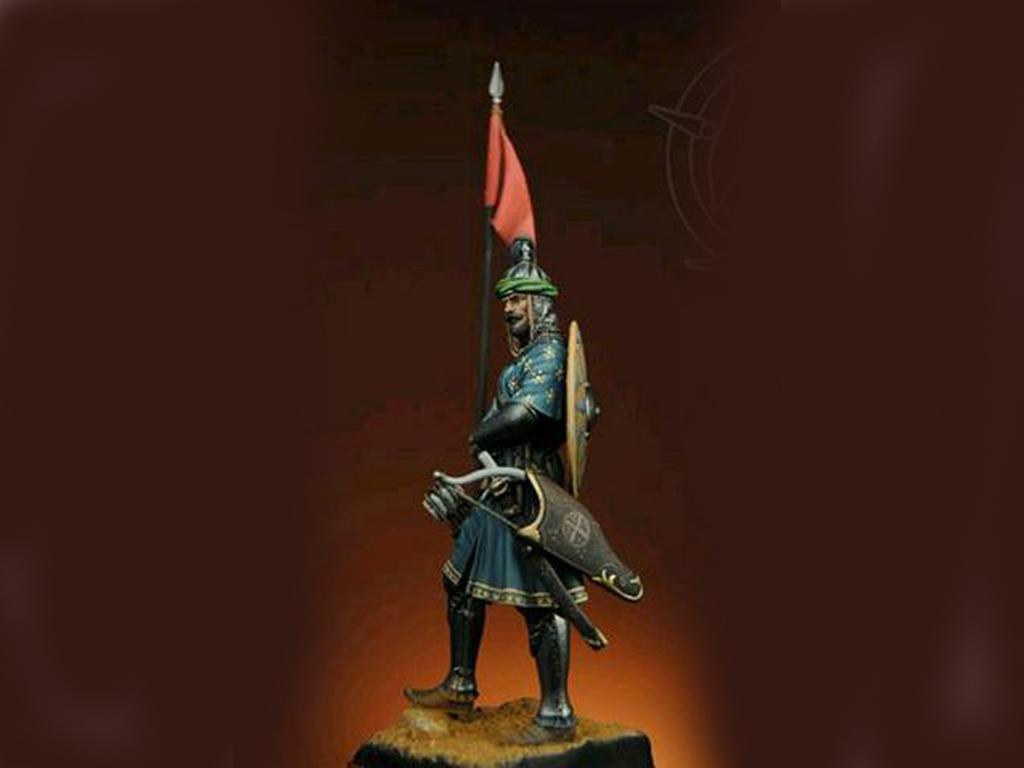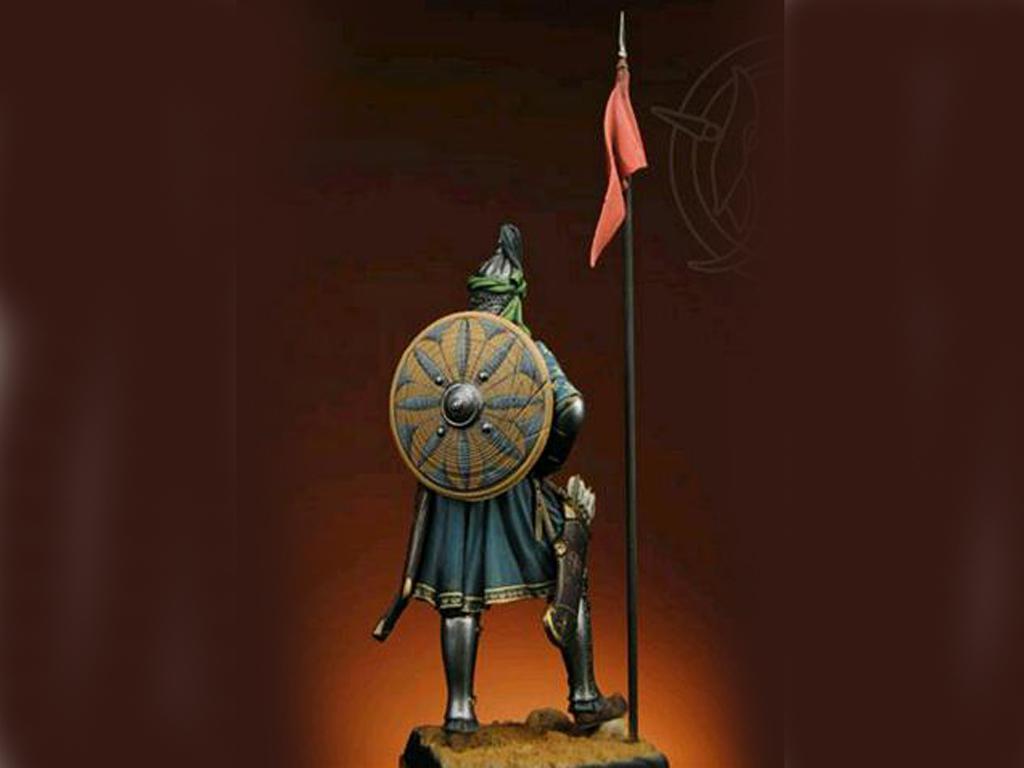







Ref.: ROME-75031

Turcoman Cavalryman
The most fearful enemies Timur faced were Ottomans and Mamluks, but in eastern Anatolia and Azerbayjan, Turcoman tribal warriors put up extreme resistance to Timur’s invasions. Qara and Aq Qoyunlu (Black and White sheep) Turcomans emerged out of the collapse of Mongol authority in these areas, which, after Timur’s death, developed into major regional powers. The Qara Qoyunlu were overthrown by their Aq Qoyunlu rivals before they could achieve much, but the Aq Qoyunlu went on to carve out a state that stretched almost from the Mediterranean to the Arabian Gulf. They dominated the rich Mesopotamian trade routes, maintained political relations with Muslim states in India and cultivated an alliance with Venice. The Turcoman army was powerful and had strong cavalry. These tribal warriors were trained to fight on horseback, and their strength lay in their mobility as mounted archers. Their weapons and armour were designed for hit-and-run tactics, but were not very suitable for static siege warfare. The elite cavalry of both Turcoman states appear to have been equipped in a similar manner to the Ottomans. A chainmail coif provided head protection. They wore tall, pointed helmets usually called “turban helmets” due to their bulbous shape and the flutings resembling the folds of a turban. A turban was wrapped over the helmet. The tassel at the top is an indication of rank. Under their knee-length tunics they wore “djawshan” armour, which was also used by Ottoman and mamluk cavalry, a coat of chainmail reinforced with iron splits, plate armour armguards and leggings. Their weapons were the bow and arrow, a curved sword, a characteristic round shield and a lance. The colour of the pennant on the lance indicated their unit. Painting instructions: Helmet in pure metal, brass or gold. Islamic decorations can be added to the flutings. Tassel in black. Tunic can be painted in blue, dark green or red with white floral decorations on the chest and gold embroidery on the skirts. Chainmail, armguards and leggings in metal. Bow in ivory, quiver and scabbard in leather with gold decorations. Shield in brown with metal boss and studs.